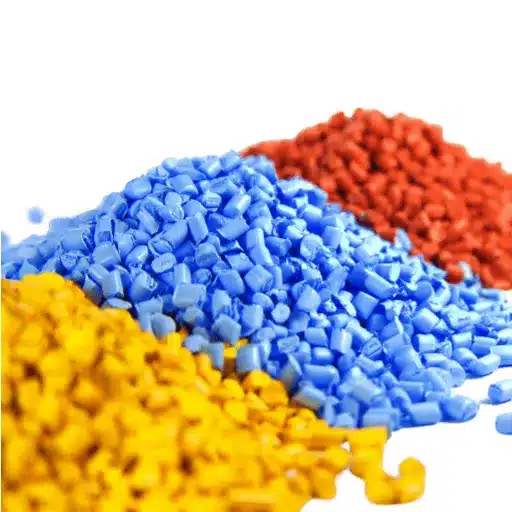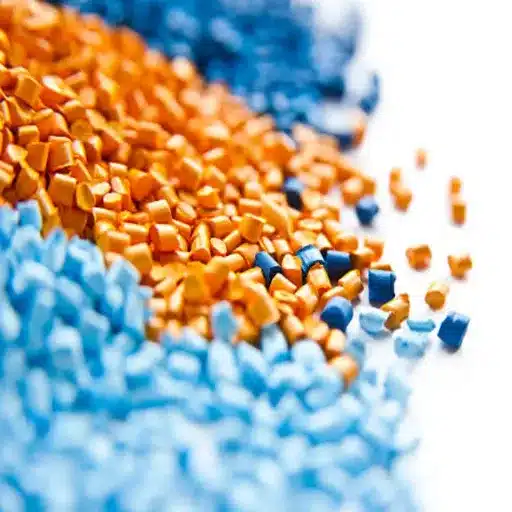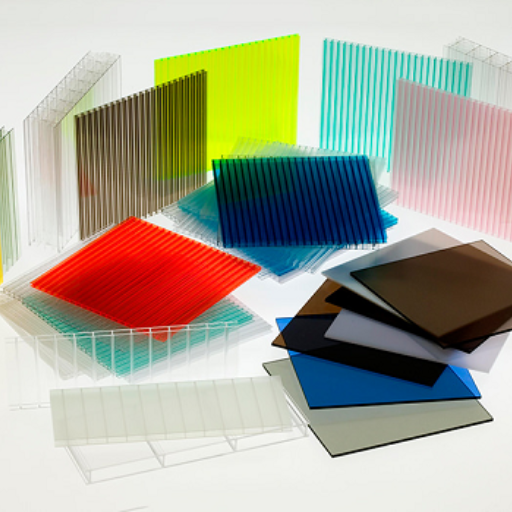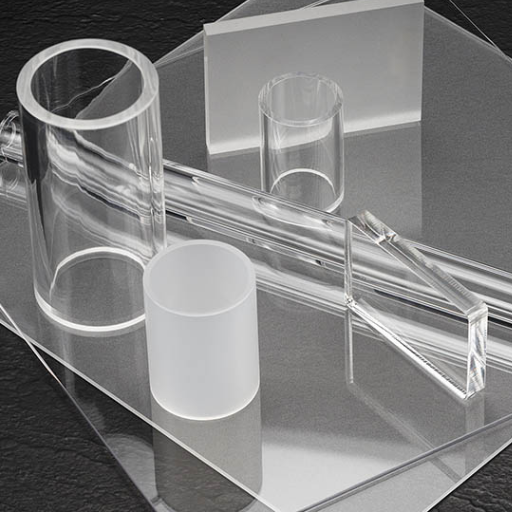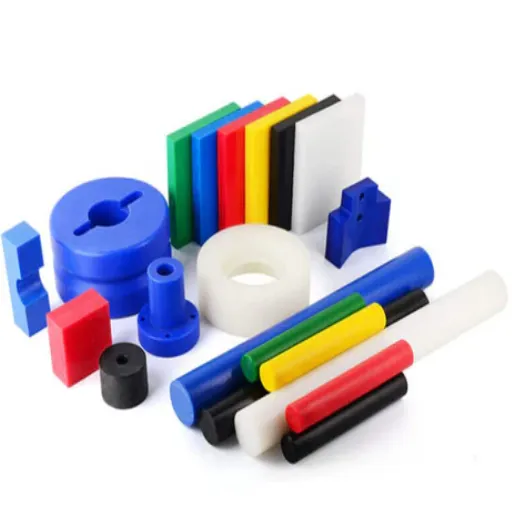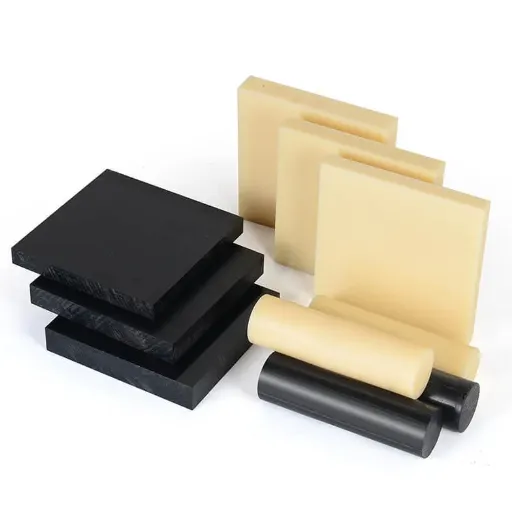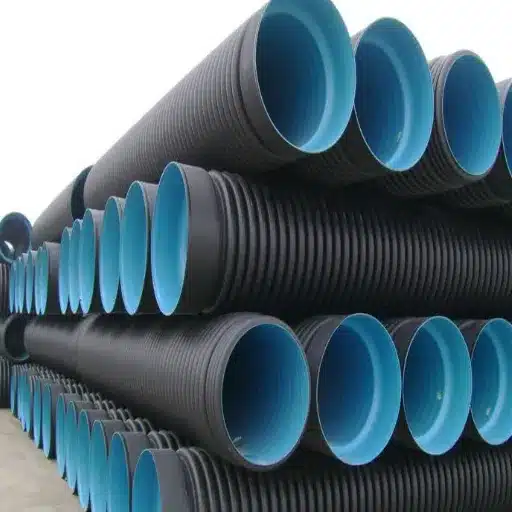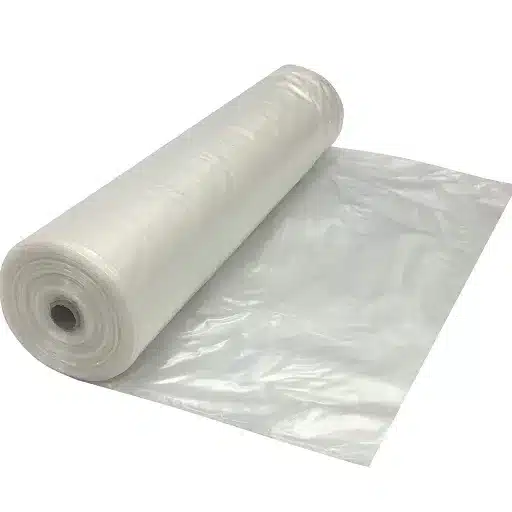Polycarbonate, a multifunctional thermoplastic polymer, is one of the main materials used in different sectors such as consumer electronics and aerospace engineering. The combination of its strength, transparency, and resistance to heat is the factor that mostly leads to its preference by designers and engineers. One has to know the basic material properties of polycarbonate in order to use it to its full potential, of which the most important one is density. The pc density g/cm³ is an important parameter that affects the final weight of a product and its structural integrity among other things. This paper will take you through all the important aspects of polycarbonate density including its significance, methods of measurement, and various applications.
Introduction to PC Density g/cm³

What is PC Density g/cm³?
PC density g/cm³ is a measure of how much polycarbonate (PC) mass is in a specific volume, and it is presented in units of grams per cubic centimeter. The density of most standard grades of polycarbonate is around 1.20 to 1.22 g/cm³. This value is a basic physical property of the material that determines its behavior and use. It is so important that one of the first things engineers consider is the density because it directly influences the weight of the components, which is a significant factor in the design of car and aircraft where the weight is critical.
📊 Key Statistic
Standard PC Density Range: 1.20 to 1.22 g/cm³
Importance of Understanding Polycarbonate Density
It is essential to know polycarbonate density for many reasons. Its effects get to material selection, cost estimation, and performance simulation directly. A designer can make a strong but light part if the density is known in product designing. For the manufacturer, the density data is a component of the material costs calculation and inventory control. A complete understanding of the material properties, such as density, ensures that the products behave as expected under real conditions, thus avoiding failures and ensuring safety and reliability.
💡 Why Density Matters
- Material Selection: Enables informed decisions in choosing the right material for specific applications
- Cost Estimation: Critical for calculating material costs and managing inventory
- Performance Simulation: Ensures products behave as expected under real-world conditions
- Safety & Reliability: Prevents failures by accounting for material behavior
Overview of Applications in Various Industries
The relatively low and consistent density of polycarbonate allows it to be used in various applications. In the automotive sector, it is used for lightweight headlamp lenses and interior parts contributing to the overall fuel economy. It is the electronics industry that benefits the most from polycarbonate; they get durable and lightweight casings for laptops, smartphones, and other devices. In the case of construction, polycarbonate sheets are used for glazing and roofing in areas mostly covered with glass due to their strength and low weight compared to that of glass. The medical sector also prefers it for sterile, transparent equipment that is both resilient and light.
| Industry | Applications | Key Benefits |
|---|---|---|
| Automotive | Headlamp lenses, interior components | Fuel efficiency, lightweight design |
| Electronics | Laptop casings, smartphone covers | Durability, portability |
| Construction | Glazing, roofing sheets | Strength, lighter than glass |
| Medical | Sterile equipment, transparent devices | Resilience, lightweight, sterility |
Techniques for Measuring PC Density g/cm³

Common Methods for Measuring PC Density g/cm³
The Archimedes principle and gravimetric analysis are the two most widely accepted methods of measuring solid density. Both methods are routinely used in both laboratory and industrial applications to confirm that materials meet the required specifications.
Archimedes Principle
Archimedes’ principle is a traditional and very precise procedure for ascertaining an object’s density. According to this principle, the upward force acting on a body immersed in liquid equals the weight of the liquid that the body has displaced. The process of measuring the volume of a solid (in this case, a piece of polymer) involves weighing it first in the air and then in a liquid of known density (usually distilled water) where it is submerged completely. The difference in the two weights gives the volume of the solid, which subsequently leads to the calculation of its density.
🔬 Archimedes Principle Method – Step by Step
- Step 1: Weigh the polycarbonate sample in air using a precision balance
- Step 2: Completely submerge the sample in distilled water
- Step 3: Weigh the submerged sample
- Step 4: Calculate the difference between the two weights to determine volume
- Step 5: Compute density using the mass-to-volume ratio
Gravimetric Analysis
Gravimetric analysis is a technique that relies on obtaining the mass of a sample and its volume separately, with high precision. The volume of a regularly shaped sample (like a cube or cylinder) is measured using calipers, while that of an irregularly shaped sample is obtained by using a pycnometer or gas pycnometry, thus yielding very accurate results. The density is, then, computed by dividing the mass by the volume, giving a direct reading of the pc density g/cm³.
Tools and Equipment Used in Density Measurement
Specialized equipment is necessary for precise density measurement. Among such equipment are analytical balances that measure mass very accurately, pycnometers that determine volume, and densitometers which are automated instruments that frequently use the Archimedes principle. For non-critical measurement cases, digital scales and calipers can yield a reasonable approximation.
🛠️ Essential Equipment Checklist
- ✓ Analytical Balances – For precise mass measurement
- ✓ Pycnometers – For accurate volume determination
- ✓ Densitometers – Automated instruments using Archimedes principle
- ✓ Digital Scales – For non-critical measurements
- ✓ Calipers – For measuring dimensions of regular shapes
- ✓ Gas Pycnometry Equipment – For irregular samples
Accuracy and Challenges in Measurement
The situation of getting density measurements that are accurate is difficult. It is possible for air bubbles to stick on the submerged sample and thus, be one of the sources of error. Others include temperature changes that affect the density of the liquid and impurities within the polycarbonate. It is advisable to apply standard techniques, such as ASTM D792 methods, to get consistent and reliable results.
⚠️ Common Measurement Challenges
- Air Bubbles: Can adhere to submerged samples causing measurement errors
- Temperature Fluctuations: Affect liquid density and measurement accuracy
- Material Impurities: Can alter the true density of polycarbonate
- Solution: Follow ASTM D792 standard methods for consistent results
Applications of PC Density g/cm³ in Industry

Role of PC Density g/cm³ in Product Design
Density is one of the most critical factors for the selection of materials in the product design stage. Engineers consider this property in creating and using Computer-Aided Design (CAD) and Finite Element Analysis (FEA) software to bring about a performance simulation of a part. It gives the opportunity to perform a thorough analysis of the design concerning weight, balance, and structural integrity, so that the final product is not only functional but also efficient. A good example is the designing of a lightweight and at the same time durable drone frame which is based on the density of the materials that are to be utilized that is polycarbonate among others.
🎯 Product Design Applications
Engineers utilize PC density data in CAD and FEA software to simulate performance, analyze weight distribution, assess structural integrity, and optimize design efficiency. This is particularly crucial in applications like drone frame design where lightweight durability is paramount.
Applications in Manufacturing and Engineering
In the manufacturing and engineering sectors, the density information is a must for controlling the quality. The process to check that the density of those materials coming into the factory matches their specifications is performed by the manufacturers. The difference in the density measurements might be the signal of an issue with the material grade, or the contaminants might be present which could lead to poor quality of the end product. It is particularly true in the high performance sectors like aerospace and medical device manufacturing.
Importance in Recycling and Sustainability
Density is another main factor in recycling. The automatic sorting systems in the recycling plants frequently apply the density-based separation methods like float-sink tanks to differentiate the different types of plastics. Polycarbonate, with its specific density, can be efficiently extracted from the thermoplastic group consisting of polyethylene (PE) and polypropylene (PP), thus leading to a cleaner recycling stream and augmenting a circular economy.
♻️ Sustainability Benefits
Density-based sorting enables efficient separation of polycarbonate from other plastics like PE and PP, creating cleaner recycling streams and supporting the circular economy through automated float-sink tank systems.
Factors Affecting PC Density g/cm³
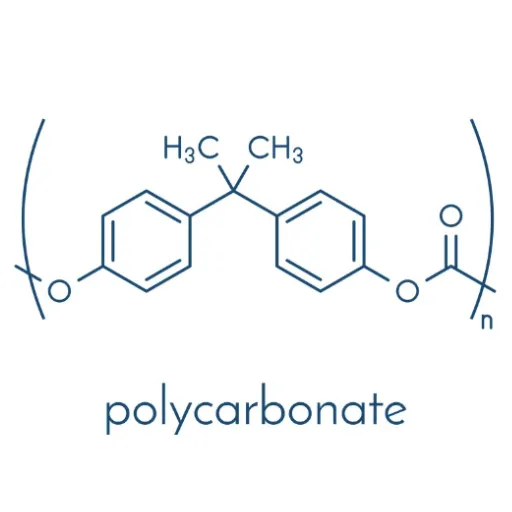
Material Composition and Additives
The composition of the basic material utilized for polycarbonate can be shifted with the help of additives. For example, the addition of glass fibers to form a composite material would result in the increase of the total mass and the improvement of the material’s stiffness and strength. On the other hand, blowing agents may be applied to produce a polycarbonate foam of lower density for use in insulation or as lightweight structural components.
Environmental Factors: Temperature and Pressure
Polycarbonate, like many other materials, will go through a small change in density when the temperature or pressure are changed. When the temperature rises, the material gets bigger and its mass per unit volume decreases a little. The changes in density might be small, but they could still matter in applications that require high precision or in places where the temperature fluctuates a lot.
Variations in Manufacturing Processes
The process of manufacturing can be a factor that contributes to the density of the end product. The settings during injection molding or extrusion like cooling rate and pressure, can alter the crystalline structure and internal stresses of the material, which in turn will affect the measured density of polycarbonate by a small amount.
| Factor | Effect on Density | Examples |
|---|---|---|
| Additives | Variable (increases or decreases) | Glass fibers (increase), foaming agents (decrease) |
| Temperature | Slight decrease with increase | Thermal expansion reduces mass per unit volume |
| Manufacturing Process | Minor variations | Cooling rate, pressure in injection molding |
Comparing PC Density g/cm³ with Other Materials

PC Density g/cm³ vs. ABS and Acrylic
Polycarbonate’s density is rather average when compared to other transparent or engineering plastics. To be specific, Acrylonitrile Butadiene Styrene (ABS) has a density of about 1.06 g/cm³ which is a bit lighter, while Acrylic (PMMA) density is around 1.18 g/cm³ which is quite close to that of polycarbonate. The materials’ selection is often driven by other properties such as impact resistance where polycarbonate considerably outperforms both.
| Material | Density (g/cm³) | Key Advantage |
|---|---|---|
| ABS | ~1.06 | Lightest weight |
| Acrylic (PMMA) | ~1.18 | Excellent clarity |
| Polycarbonate (PC) | 1.20-1.22 | Superior impact resistance |
Advantages of Polycarbonate in Particular Applications
Impact resistance is the main feature that polycarbonate presents together with the good light transmission and reasonable density. Thus, polycarbonate is the choice for the application that needs the combination of durability and transparency such as safety glasses, riot shields, and bullet-resistant windows. The material’s property ratio makes its use today acceptable even if lighter alternatives are available.
✨ Polycarbonate Advantages
- Exceptional impact resistance (250x stronger than glass)
- Excellent light transmission properties
- Optimal balance of strength and weight
- Ideal for safety-critical applications
- Superior durability compared to alternatives
Case Studies: Picking the Right Material
Let’s take a modern car headlight design as an example. The glass is heavy and breaks easily. Acrylic is lighter but can be easily cracked. The polycarbonate comes as the perfect solution: it is light enough not to affect the fuel consumption and extremely durable to resist the road debri impacts, thus providing long-term durability and safety.
🚗 Case Study: Automotive Headlight Design
❌ Glass: Heavy and breaks easily
⚠️ Acrylic: Lighter but prone to cracking
✅ Polycarbonate: Perfect balance – lightweight for fuel efficiency + extreme durability against road debris
Practical Uses of PC Density g/cm³ Data

How Engineers Use PC Density g/cm³ in Simulations
The engineers are making extensive use of the pc density g/cm³ value in the simulations run on software to predict the behavior of a product. Density is a significant variable in the calculation of momentum and so, in drop tests, it is. In thermal simulations, it assists in telling the component’s response to heat. These simulations are a source of savings in terms of both, time and money as they cut down the need for physical prototypes.
🖥️ Engineering Simulation Applications
- Drop Test Simulations: Density crucial for calculating momentum and impact forces
- Thermal Analysis: Predicts component response to heat exposure
- Structural Integrity: Evaluates load-bearing capacity and stress distribution
- Cost Savings: Reduces need for expensive physical prototypes
Importance in Quality Control and Compliance
For the industries with strict standards and regulations, the quality control is the very first thing. Density of the incoming polycarbonate is checked to get confirmation about its compliance with the regulatory requirements like, FDA for food-contact materials, or ISO for medical devices. The supply chain of high-quality, reliable materials with consistent density is a hallmark.
📋 Quality Control Best Practices
- Verify density of incoming materials against specifications
- Ensure compliance with regulatory standards (FDA, ISO)
- Monitor consistency across production batches
- Document all density measurements for traceability
- Implement corrective actions for out-of-spec materials
Real-World Examples of Density Applications
Everyday products are clear examples of the importance of polycarbonate’s density. The lightweight frame of your eyeglasses, the hard shell of your luggage, the transparent cover of your blender, and the strong casing of your smartphone all made stronger and lighter because of the material’s specific pc density g/cm³, which is an optimal balance of strength and weight directly.
👓 Eyeglasses
Lightweight frames that provide durability without adding weight
🧳 Luggage
Hard shells that resist impact while remaining portable
🍹 Blenders
Transparent covers offering safety and visibility
📱 Smartphones
Strong casings protecting sensitive electronics
Summary and Conclusion
Key Takeaways
In summary, the pc density g/cm³ is a truly integral property that is way more than just a number on a technical datasheet. It is a property that provides designers, manufacturers, and engineers with the crucial information for the processes of material selection, product designing, and quality assurance. When it comes to the understanding of polycarbonate’s density, measurement techniques, and its influencing factors, it is all about the full potential in the area of innovation and product development.
From deciding if the satellite component is light enough for the launch, to checking if the child’s toy is durable enough for safe play, the density of polycarbonate has a silent yet important role to play. By conquering this property, manufacturers can continue to innovate products that are not just lighter and stronger but also more efficient, reliable, and sustainable. Hence, the polycarbonate density study becomes an essential part of modern materials science and engineering.
Critical Success Factors
Accurate Measurement
Using standard methods ensures reliable results
Material Selection
Density guides optimal material choices
Quality Control
Consistent density ensures product reliability
Sustainability
Enables efficient recycling processes
Frequently Asked Questions (FAQ)
1. What is the standard pc density g/cm³?
The standard pc density g/cm³ (polycarbonate density) goes generally from 1.20 to 1.22 g/cm³. One can expect this value slightly varied according to the material’s specific grade and additives that were used in the process of manufacturing.
2. Why is the pc density g/cm³ important for product design?
Knowledge of pc density g/cm³ is indispensable for the engineers and designers to figure out a component’s weight, strength, and overall material cost. It is a primary property that is used in CAD software and performance simulations to confirm the final product’s specifications in applications where weight is a critical factor and that are being prone, for example, to aerospace or automotive parts.
3. How does pc density g/cm³ compare to other plastics like acrylic?
The density of polycarbonate (around 1.20 g/cm³) is very close to that of acrylic (PMMA), which is approximately 1.18 g/cm³. Their densities might be similar, but polycarbonate has a much better impact resistance, thus it is the material of choice in applications where durability is crucial.
4. Can the pc density g/cm³ be modified?
Yes, the density of polycarbonate can be changed with the help of additives. For instance, the addition of glass fibers will result in an increase of the pc density g/cm³ and a gain in the material’s stiffness, meanwhile the addition of foaming agents will lead to a decrease in density for the creation of lightweight foams for insulation or structural components.
5. What is the most common method to measure pc density g/cm³?
One of the traditional, yet precise techniques for measuring pc density g/cm³ is based on the Archimedean principle. It consists of weighing the sample first in the air and then during its immersion into a liquid with a known density, which is often water. The weight difference between air and water will make it possible to obtain very accurately the volume of the sample, which is then used for the calculation of its density.
The Future of Polycarbonate
As manufacturing technologies advance and sustainability becomes increasingly important, understanding and optimizing polycarbonate density will remain crucial. From aerospace innovations to everyday consumer products, this fundamental property continues to shape how we design, manufacture, and recycle materials in the modern world.
📚 Reference Sources
- •
Oregon State University: A study discussing composite density, including the density of polycarbonate (PC) at 1.172 g/cm³ – Interfacial Toughness and Its Effect on Composite Density - Interfacial Toughness and Its Effect on Composite Density
- •
University of Tennessee: A micromechanical analysis of molecular orientation in polycarbonate, mentioning its density of 1.2 g/cm³ – Micromechanical Analysis of Molecular Orientation in High-Performance Polymers - Micromechanical Analysis of Molecular Orientation in High-Performance Polymers
- •
Harvard-Smithsonian Center for Astrophysics: A resource on unit conversions, including density-related constants - Unit Conversions







